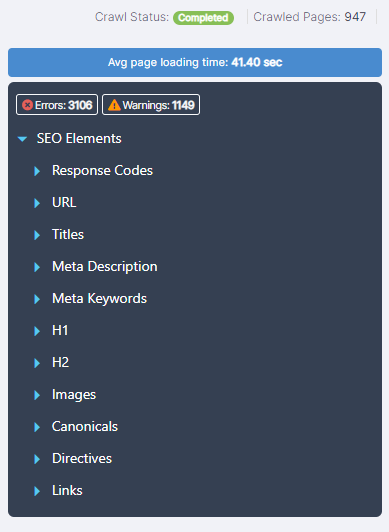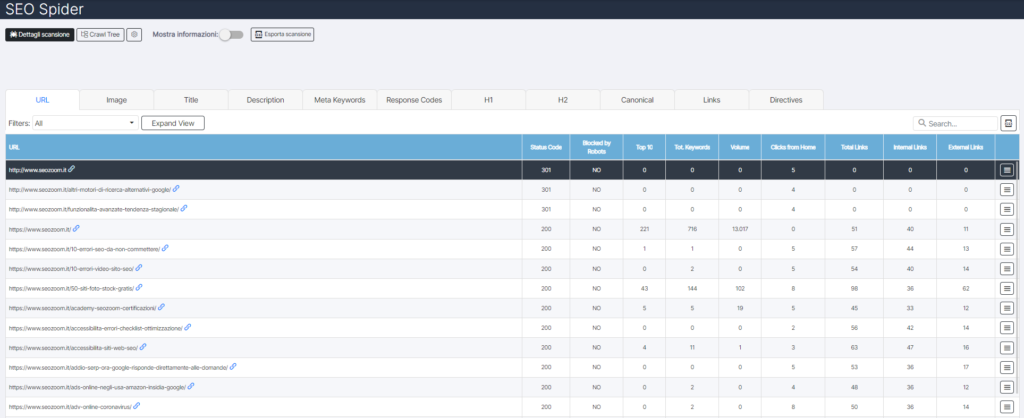SEO Audit, the analysis to optimize the site
It is a periodic check necessary to check the health of our site and verify that there are no infections, pardon errors, that can compromise the results and visibility on search engines: our overview of SEO techniques and website analysis tools leads us today to deepen an important and delicate issue, that of SEO Audit.
This term refers to a very specific operation to scan, review and evaluate the performance of an online project, highlighting any errors, problems, the relationship with competitors and, in summary, all the technical and content aspects that have influence on the performance of the site and its positioning on search engines.
What is the SEO Audit
In common language, the audit is an independent assessment that serves to objectively assess a given object, to determine whether the criteria and objectives set previously have been met; to perform this activity is the auditor (or evaluator), professional who has demonstrated characteristics and competence to carry out this assessment.
In our field, the SEO Audit is a comprehensive, technical and diagnostic SEO analysis on the website that serves to have as defined a picture as possible of the health status of the project. The role of the auditor is played by SEO audit softwares or industry experts who, through a set of various analyses, deepen the technical, structural, content and competitive aspects of the site, both internal and external, and their possible influence in terms of ranking on search engines, to discover the issues at the SEO level that hinder performance, such as deficiencies and structural errors that do not allow to have a proper scan and indexing of resources, in view of the overall optimization of the website.
What is the SEO audit for
Through this SEO verification you can discover the strengths and weaknesses of a site, with the aim of intervening for corrections and to develop an effective SEO strategy to maximize the result of their work and increase the organic traffic that comes from search engines.
Essentially, therefore, this process serves to ensure that our website can be viewed, scanned and classified by search engines, and is a central element of technical SEO activity, the area of site optimization work that focuses on the technical factors, in fact, that can make the pages more or less easy to scan for crawlers.
SEO audits are a great way to create action plans to find and correct problems, identify internal improvement opportunities, and also discover elements that can help us overtake competitors while creating better customer experiences.
Website analysis, why it is strategic
As we said, with this SEO audit operation you can check in a precise and detailed way the website, of whatever nature it is (blog, eCommerce, information portal and so on) to verify that all aspects of the project are in proper operation, for example by analyzing content levels, SEO on page and off page and link profile, verifying that Google spiders track the site without problems and that search engines are able to read the sitemap, but also examining the browsing experience offered to users and potential customers.
A complete checkup of the website
In general, the various online SEO tools allow you to monitor the status of optimization based on known and assumed SEO ranking factors, to indicate the way to follow to scale the SERP for the keyword reference. The execution of this investigation therefore allows to discover the weaknesses of a project that underperforms, highlighting the problems and discover the causes, which can be generated by an inefficient technical configuration, for example reporting images that have not been optimized, sitemaps absent, not using CDN, or more generally difficulties in terms of User Experience, slowness in viewing pages (we said that speed is a ranking factor!) or problems of usability from mobile (a theme that is particularly close to Google); in addition to the SEO test, then, this feature also serves to determine the location of the site within the industry, to make a comparison with competitors and to identify content to bet on to improve.
SEO audit checklist, stages of the analysis
In principle, the various SEO tools available work in a rather similar way, carrying out SEO analysis activities on site and off site, with diagnostic testing tools to make a checkup of the website. Generally, we start from the study of the structure of the site, proceeding with the analysis of pages and code to evaluate the main ranking factors, through the analysis of competitors, and concluding with the verification of the contents and variables that make a website optimized and performing. At the end of the transaction, you receive an evaluation document in which the problems encountered are listed, categorized, contextualized and explained in detail, including through practical examples, with priorities for corrections and suggestions for solving these problems.
Testing activities on the health of the site
The SEO check starts from the very structure of the project and the controls on the on page SEO, which are the most technical and durable, aimed at outlining what concerns the site as such (and therefore the code, content, loading speed) and highlight critical issues related to site architecture, HTML code and user experience. For example, you get technical answers to questions about navigation within the site, the logic of the links, the efficiency of the sitemap, the presence of broken links and content sorted semantically, checking through various tests in the robots.txt files that search engines are allowed to scan only selected pages.
No less strategic is the elimination of duplicate content, an operation to be performed on a periodic basis if you add new content to the site: the goal of optimization is to avoid that the pages of the website have generated duplicate url, eventuality that confuses the crawler and is considered a serious error (in this case you can enter the Rel Canonical). As for the on-page survey, there are two particularly useful SEO software such as Screaming Frog or Visual SEO, crawling simulators that verify the existence of the problems described.
Also in the field of on page SEO you can try to improve the SEO already published texts, also analyzing the product content to find out if only the best keywords have been identified (in terms of research volume and competitive potential) and how to do so.
What the Off-Page SEO test evaluates
From an Off-Page SEO analysis perspective, we go instead to deepen all the subjects that affect activities and conditions that are external to the site, but that affect its performance, starting with the backlinks and up to brand authority, mentions, shares and popularity on social networks. Using SEO tools such as ahrefs or the one inside SEOZoom, for example, you can know how many and which links the site receives, view an overview of the anchor texts used for links and learn more about the brand situation on social networks; This activity on external factors serves to refine the SEO strategy, getting hints to optimize the link acquisition campaign and strengthen the brand of the site.
How is an SEO audit done
The purpose of the audit is therefore to identify as many fundamental problems as possible that affect the performance of organic research, reporting in particular
- SEO technical issues
- Problems with the structure of the website
- Problems of on page SEO
- Potential off page issues
- User experience issues
- Gaps and opportunities on content
possibly also presenting competitive analysis insights and providing details on aspects such as performance (also in the light of the latest parameters of the Google Core Web Vitals), mobile optimization, health of internal links, problems with images, status of pages (especially for pages with 404 and 301 codes), URL structure, canonical tags and so on.
The amount (and quality) of the information obviously varies from tool to tool, but basically each tool should provide at least the answers to basic technical SEO issues such as site maps, server errors and metadata, covering at a higher level also factors such as accessibility, usability, effective indexing and possible areas of optimization.
Analyze a website with SEOZoom
Everything we have written so far is general, but our platform allows you to perform an online SEO audit efficiently and easily thanks to the new SEOZoom SEO Spider, a unique tool, integrated in the suite, that performs a thorough technical investigation in no time on each site.
It is a tool that scans every page of the domain practically like search engine crawlers do, reporting any errors in the code or problems resulting from the incorrect use of important tags for SEO and offering a fast report with data and guidance to correct the critical emerged.
In this way, we can monitor all the redirects present, check for problems with URLs, duplicate pages, page titles, meta descriptions, headers and much more, all without installing any software (the tool works directly from the browser) and with the possibility to export the data to analyze them more comfortably also offline.
SEO Audit with the SEOZoom spider
Once the tool is started (which scans for internal links and only HTML pages), the survey reports in detail the status of the website, grouping the various issues on which to intervene in the categories “Errors” and “Warnings”, that allow us to immediately navigate and decide the priorities of intervention to correct errors.
In the Errors section are listed the main errors found, which can be incorrect URLs, images and links not working, pages that have some problems scanning, title and duplicate descriptions. It is therefore the first “block” of errors that must be corrected as soon as possible to avoid penalties or problems when scanning search engines.
The second section is “Warnings“, whose information concerns the factors on which the tool “suggests” to intervene to optimize the website, such as the absence of titles H1 or ALT Tag images: It is then up to our discretion to understand and evaluate in which cases it is appropriate to intervene to fix or if these are “irrelevant” elements.
Very useful are also the information that we find in the Links sections (which offers us the focus on all types of links – external, internal, on images and with rel attributes), Response Code (which reports precisely the list of all HTTP status codes of the pages analyzed) and Directives (which helps us to control and monitor the active settings on the page in terms of meta tag robots), while activating the Crawl tree view we can follow the path taken by the spider to find and analyze all the pages of the site, that can be useful to understand the structure of internal links of the site that is practically shown to our eyes.






